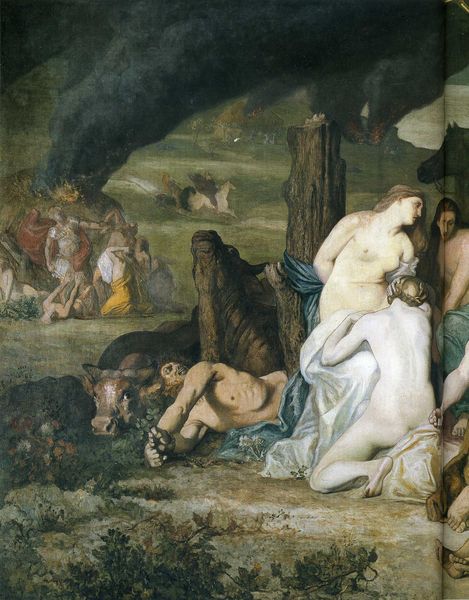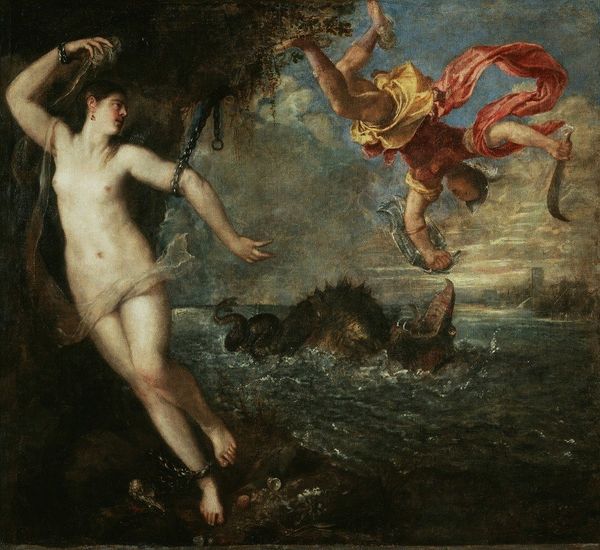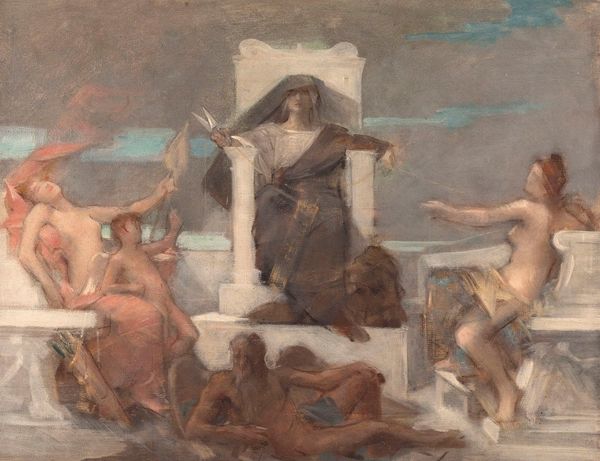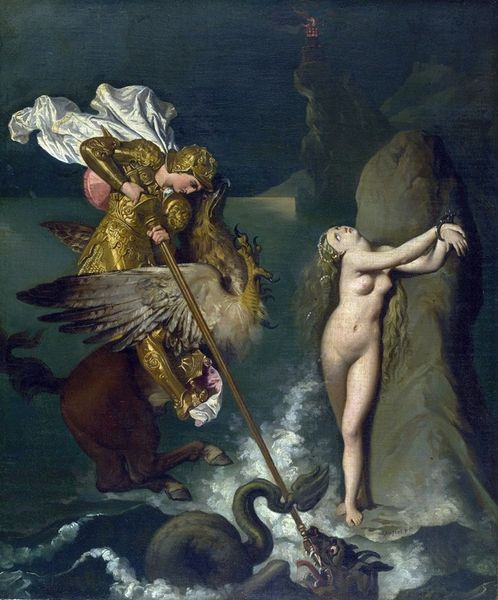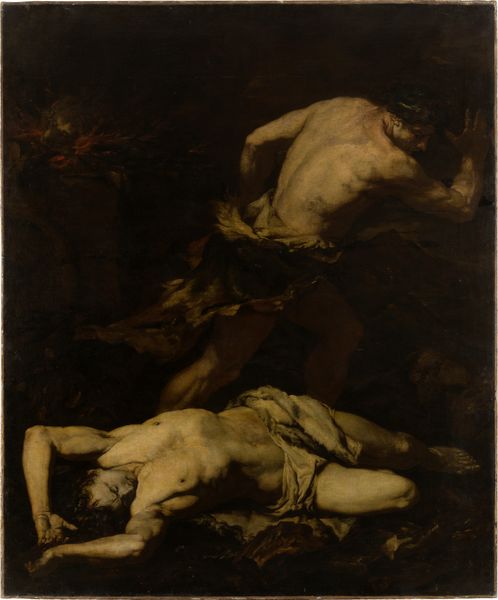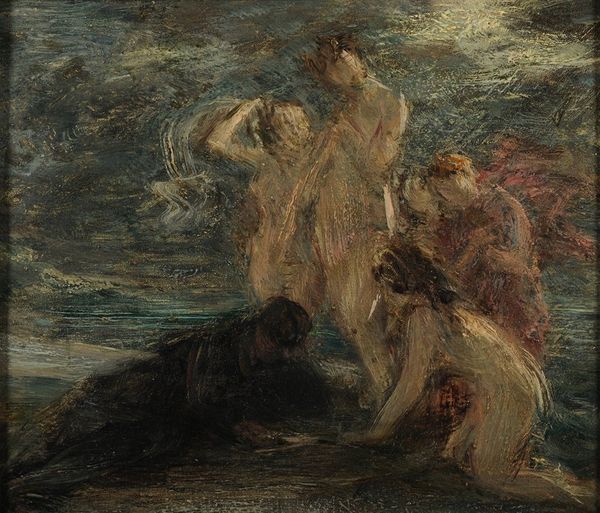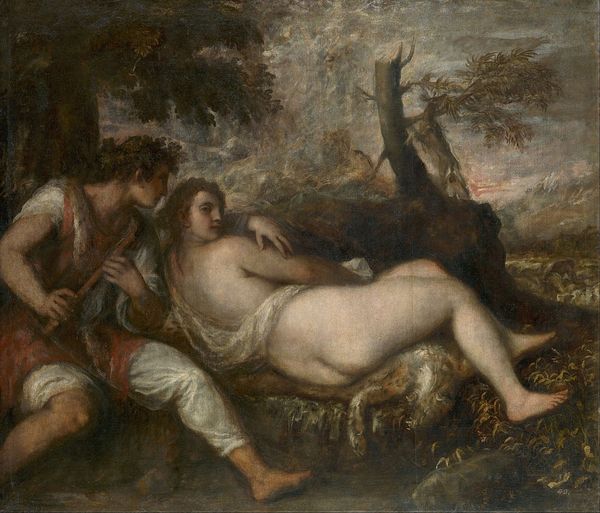
Hero, Having Thrown herself from the Tower at the Sight of Leander Drowned, Dies on his Body Possibly 1829
0:00
0:00
Dimensions: support: 750 x 925 x 20 mm
Copyright: CC-BY-NC-ND 4.0 DEED, Photo: Tate
Editor: Here we have William Etty’s "Hero, Having Thrown herself from the Tower at the Sight of Leander Drowned, Dies on his Body". It's a powerfully tragic scene, rendered with such tangible flesh. What can you tell me about Etty’s approach to materials here? Curator: Etty's sensuous handling of paint, the very materiality of it, is key. He wasn't just depicting a scene; he was crafting flesh, using pigments ground by laborers, applied with brushes made by artisans. He was engaging with the entire chain of production inherent to creating art. Editor: So, it’s not just the subject, but the means of production that are significant? Curator: Exactly. Consider the societal implications of readily available pigments versus rarer, more expensive ones. The very act of painting becomes a commentary on class and access. Editor: That definitely gives me a new perspective! Curator: It highlights how the creation of art is so deeply rooted in material realities.
Comments
tatebritain 6 months ago
⋮
http://www.tate.org.uk/art/artworks/etty-hero-having-thrown-herself-from-the-tower-at-the-sight-of-leander-drowned-dies-on-his-t12265
Join the conversation
Join millions of artists and users on Artera today and experience the ultimate creative platform.
tatebritain 6 months ago
⋮
In classical mythology, Hero and Leander were secret lovers who lived across the Hellespont strait (now the Dardanelles, Turkey). Leander swam to visit Hero each night, returning before sunrise. William Etty depicts their tragic ending. Leander drowns in a storm and, discovering this, Hero leaps from her tower to die by his side. The figures’ semi-naked bodies are dramatically foreshortened against the coastal background. The emotional intensity and anguish of the myth made it a popular subject among Romantic artists and writers. Gallery label, May 2023


